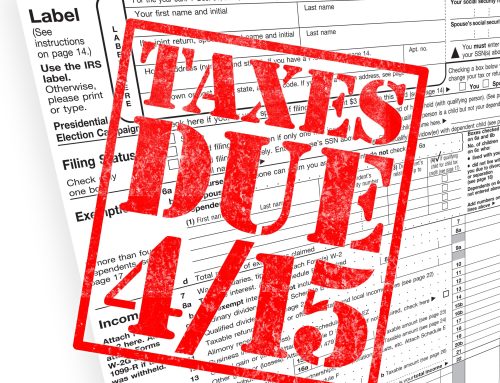A number of lucrative individual tax incentives originally introduced in the Economic Growth and Tax Relief Reconciliation Act of 2001 (EGTRRA) are scheduled to expire after December 31, 2010. If Congress does not act to extend the lower rates and enhanced tax breaks under EGTRRA, these popular tax cuts will expire and will be replaced by rates, deductions, credits and other provisions governed by less generous law in place before EGTRRA. This letter provides a general overview of the important provisions set to expire unless Congress acts, and what those provisions will look like without any modification.
Individual income tax rates. Before EGTRRA, the individual marginal income tax rates were 15, 28, 31, 36, and 39.6 percent. EGTRRA gradually reduced the rates (accelerated by JGTRRA). For 2010, the individual marginal income tax rates are 10, 15, 25, 28, 33, and 35 percent. Under EGTRRA’s sunset provision, the individual marginal tax rates for tax years beginning after December 31, 2010 will revert to the pre-EGTRRA levels. Thus, after December 31, 2010, the 10 percent rate will disappear, and the first portion of taxable income for all taxpayers will again be taxed at 15 percent.
Itemized deduction phase-out. The limit on itemized deductions reduces a high-income taxpayer otherwise allowable itemized deductions. Certain items, however, such as medical expenses, investment interest, and casualty, theft, or wagering losses, are not limited. Under EGTRRA, the limits on itemized deductions phase out and entirely repealed for 2010. Under EGTRRA’s sunset provision, the limit on itemized deductions will be reinstated for tax years beginning after December 31, 2010.
Personal exemption phase-out. The personal exemption phase-out reduces or eliminates the deduction for personal exemptions for taxpayers with income over certain thresholds. The total amount that may be claimed by a taxpayer is reduced by 2 percent for each $2,500 or portion thereof (2 percent for each $1,250 for married couples filing separately) that the taxpayers AGI exceeds a $100,000 threshold. Under EGTRRA, the personal exemption phase-out was gradually eliminated beginning in 2006 and entirely repealed for 2010. Under EGTRRA’s sunset provision, the personal exemption phase-out will be reinstated in full for tax years starting after December 31, 2010.
Standard deduction for married couples filing jointly. Prior to EGTRRA, the standard deduction for a married couple filing jointly was 1.6 times the standard deduction for an unmarried individual. This is commonly called the marriage penalty. Under EGTRRA, the couple’s standard deduction gradually increased to twice the single taxpayer’s amount for 2010. Under EGTRRA’s sunset provision, the increased basic standard deduction will not be available to a married couple filing jointly after 2010.
15 percent tax bracket for married couples filing jointly. To remove the marriage penalty, the size of the 15 percent regular income tax rate bracket for a married couple filing jointly was gradually increased under EGTRRA and subsequent legislation to twice the corresponding rate for married individuals filing single returns for 2010. After EGTRRA’s sunset, effective for tax years after December 31, 2010, the 15 percent regular income tax rate bracket or married couples filing jointly will return to being less than the combined 15 percent regular income tax rate brackets of two unmarried individuals filing single returns.
Earned income tax credit. Qualified individuals with earned income may claim a refundable earned income credit (EIC). The amount of the EIC reflects the taxpayer’s income and the number of qualifying children. Under EGTRRA, the level of the EIC credit phase-out was gradually increased for married couples filing jointly. EGTRRA also simplified the definition of earned income, eliminated the rule that reduced a taxpayer’s EIC by the amount of alternative minimum tax (AMT) liability, reformed the relationship test, and made other enhancements. Under EGTRRA’s sunset provision, these enhancements to the EIC will disappear after 2010.
Child tax credit. A taxpayer may claim a tax credit to each child who is under age 17 at the close of the year and satisfies relationship, residency, support, citizenship, and dependent tests. Under EGTRRA, the child tax credit gradually increased to $1,000 for the 2010 tax year. EGTRRA also modified the refund component, excluded the refundable portion of the tax credit from income, allowed the credit against regular income and the AMT, repealed the AMT offset against the additional child tax credit for families with three or more children, and eliminated the supplemental child tax credit. After EGTRRA sunsets, the credit will revert to $500 per qualifying child and the other EGTRRA enhancements will expire for tax years after December 31, 2010.
Dependent care credit. The dependent care credit applies to expenses for the care of a qualifying individual that enable the taxpayer to work. The credit is a percentage of employment-related expenses, limited by a taxpayers AGI. Under EGTRRA, the maximum amount of eligible expenses increased from $2,400 to $3,000 for one qualifying individual and from $4,800 to $6,000 for two or more qualifying individuals. The maximum credit increased from 30 to 35 percent; the credit could be reduced to a minimum of 20 percent for AGI above $28,000. Under EGTRRA’s sunset, the maximum amount of expenses will decrease to $2,400 and to $4,800, respectively and the maximum credit will revert to 30 percent.
AMT exemption. Under EGTRRA, the exemption increased for most individual taxpayers for tax years through 2004. Through 2009, Congress has enacted temporary AMT “patches.” Unless Congress enacts an AMT patch for 2010, the exemption amounts for 2010 and 2011 are $33,750 for single individuals (reduced from $46,700 for 2009); $45,000 for married couples filing jointly and surviving spouses (reduced from $70,950), and $22,500 for married taxpayers filing separately (reduced from $35,475).
These are just some of the significant tax benefits to individuals that will end on December 31, 2010, unless Congress acts to extend them. Please contact our office to discuss your particular situation.






